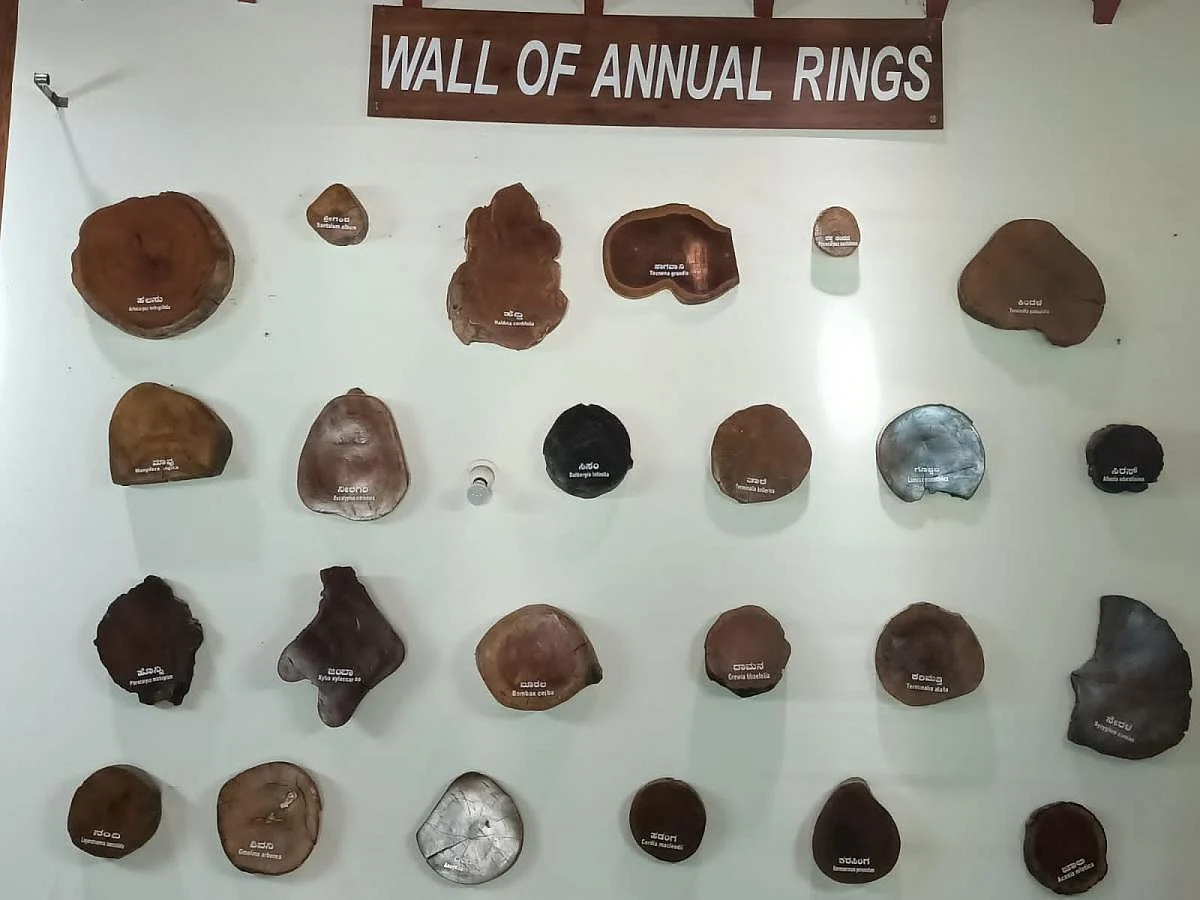
No visitor entering the office of the Range Forest Officer (RFO) in Uttara Kannada’s Haliyal can move on without taking a second look at its welcome wall.
On display is a number of tree rounds of species found in Haliyal and Dandeli taluks.
Although at first glance, these wood slices with evident annual rings look like a piece of modern art, but there is more to this than meets the eye.
Every tree round here has a story to tell—the story of its life, the story of climate change and the story of history.
“Trees are top-notch biological indicators and their annual rings reveal the events that have occurred in our environment. To make people aware of this, we came up with the idea of putting up annual rings in our office,” says Range Forest Officer Mahesh Hiremath who has been instrumental in setting up this mini-museum of tree rounds.
First of its kind in any forest office in the state, this wall of annual rings was set up in February 2021 when the new office of the RFO was constructed in Haliyal.
It has wood rounds or slices of tree trunk of around 25 species such as teak, rosewood, red sandalwood, Acacia Nilotica and others. While a few wood rounds are of trees that are about 30 to 40 years old, there are also sections of a few trees like the black murdah or the Karimatti that are nearly 100 years old.
The rounds are accompanied by information that educates visitors about the annual rings of trees and ecology.
Hiremath explains that most people know that annual rings of trees tell the age of the tree but a cross-section of a tree shows much more than its age. Diameter growth is sensitive to fluctuations in environment including changes in the moisture of soil, air temperature and sunlight.
For instance, broad rings indicate a good growing year with good rain while narrow rings show that the tree suffered through a drought. The rings provide important data for studying climatic changes that have occurred over the years. Apart from this, scar marks on the tree’s growth rings can help trace the area's date and frequency of fire occurrence. In a broader sense, these rings can provide the history of the evolution of forests and diversity of indigenous wood.
The world of wood
Ever since this wall of annual rings has been set up, several people and students including those from the Sirsi College of Forestry have visited the office to have a glimpse of the annual rings.
Ajjaiah G R, Deputy Conservator of Forests, Sirsi said that the collection of tree rounds has helped in educating forest guards, newly recruited deputy range forest officers and others in the identification of tree species and method of studying the flora of the area. School children visit the place to know about the science of trees and their annual growth rings.
Gururaj Kalkoti, a retired professor of Physics who happened to visit the RFO’s office in Haliyal while he was hunting for wood for the construction of his house, said that the wall of annual rings introduced him to the world of wood science and economics.
“I wanted to buy teak for my house but that looked too expensive. The information provided at the office through these annual rings made me think of alternatives that are equally strong and affordable,” said Kalkoti lauding the efforts of the forest office in demonstrating the story of wood to the people.
In days to come, the forest personnel want to house tree rings of at least 100 species in their collection, including ecologically-significant species from other regions. Currently, these rings are polished to protect from weather and insects. But this may prove a hurdle for those studying these rings in detail. The personnel intend to consult experts from their department on better maintenance of these rounds.